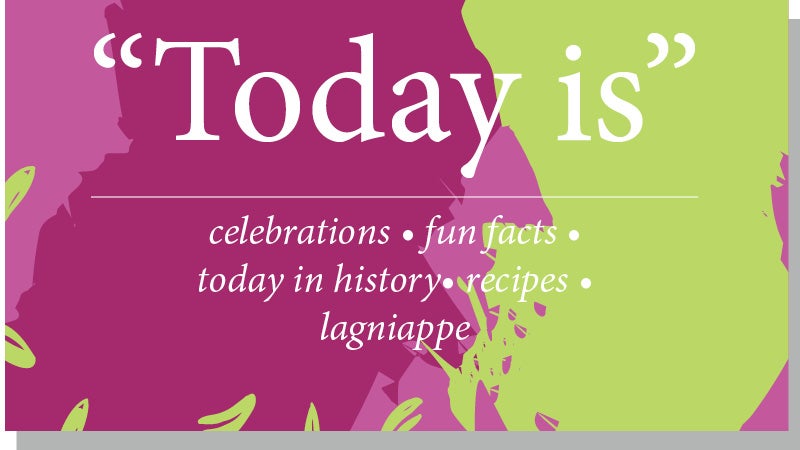Today is May 14
Published 8:00 am Friday, May 14, 2021
|
Getting your Trinity Audio player ready...
|
Wedding guests will remember many aspects of the ceremony and reception. For guests who have food allergies or require specialized diets, dinner can be memorable for all of the wrong reasons. But it doesn’t have to be.
Even though weddings are all about the happy couple’s wants and needs, special attention should be placed on ensuring guests’ comfort. Individuals with allergies and dietary restrictions warrant extra caution. Any food can cause an allergic reaction, but eight types in particular, often referred to as the “Big 8,” are responsible for the greatest numbers of adverse reactions. Milk, eggs, fish, crustacean shellfish, tree nuts, peanuts, wheat, and soy comprise the Big 8. The University of Nebraska-Lincoln’s Food Allergy Research and Resource Program says the Big 8 accounts for about 90 percent of all food allergies in the United States.
Couples need to recognize the likelihood that at least one person at the wedding will have a specialized food need. Most people with dietary restrictions will be very understanding that eating out is a challenge, especially at a wedding. But couples can take steps to ensure that guests with food allergies don’t go hungry.
· Ask about allergies on the response card. Some couples request that guests choose their food preferences on their RSVPs. Include a spot where guests can mention serious food allergies.
· Choose a caterer very carefully. Caterers are increasingly adapting to common food restrictions. Express specific food avoidances or what you want to be included and find a caterer who specializes in this type of cooking.
· Offer allergen-free appetizers. Martha Stewart Weddings suggests serving customized bite-sized hors d’oeuvres during cocktail hour to allow for easier customization. This gives guests with allergies the ability to pick and choose their pre-entrée bites.
· Label foods and let guests with severe allergies dine first. Buffets should be clearly labeled so those with allergies can avoid certain foods. Also, those with severe food allergies should have first shot at the buffet to limit cross-contamination from serving utensils.
· Create separate meals. A caterer may be able to make separate meals for certain guests, particularly if they have advanced notice.
· Don’t forget desserts and drinks. Allergens can be included in drinks and desserts as well. Offer gluten-free desserts and gluten-free beer as well.
Dietary restrictions are another factor that couples must consider when planning their weddings.
**
Better Sleep Month
How women can get a better night’s sleep
A good night’s sleep is vital to a person’s overall health. According to the United States Department of Health and Human Services, people who get enough sleep get sick less often, are more able to maintain a healthy weight and are at lower risk for serious health problems, including heart disease and diabetes. But many adults are not getting enough quality sleep, and one group in particular may be especially likely to have sleep problems.
A 2006 study published in the journal Current Opinion in Pulmonary Medicine found that women have more sleep-related complaints than men. The study suggested gender differences, including menstrual cycles, pregnancy and menopause, may underlie the observed differences in risk of sleep disorders.
Women cannot control the biological factors that may make them more vulnerable to sleep issues. However, they are not helpless when it comes to their efforts to get adequate rest.
· Create a better sleep environment. The National Sleep Foundation notes that the optimal bedroom temperature is between 60 and 67 degrees Fahrenheit. Maintaining a cool sleeping environment is even more important for women than men due to the increases in core body temperature during menstruation. A cool environment is more conducive to better sleep and can help women stay cool even when their body temperatures rise due to menstruation.
· Bathe before bedtime. A warm bath or shower prior to bedtime can lead to a decrease in body temperature, which the NSF notes can spark feelings of sleepiness. This can help with sleep onset when coupled with a cool bedroom temperature.
· Establish a bedtime routine. The DHHS notes that establishing and sticking to a bedtime routine, including going to bed at the same time each night, can help women overcome their sleep issues. Over time, the body will readjust and grow accustomed to going to bed at this time, increasing the likelihood of falling asleep. Stick to this routine throughout the week, including on weekends.
· Avoid certains substances close to bedtime. The NSF advises against consuming caffeine, alcohol and nicotine close to bedtime. Each of these substances can compromise a woman’s ability to fall asleep or stay asleep. For example, the Cleveland Clinic notes that while alcohol before bed may help people feel sleepy, that sedative effect wears off as the alcohol begins to metabolize. That process prevents the body from entering the stages of deep sleep, leading to more frequent sleep interruptions throughout the night.
Women who are having trouble sleeping can try various strategies to overcome their issues. Women with chronic sleeping problems can consult their physicians about additional ways to get better, more consistent sleep.






